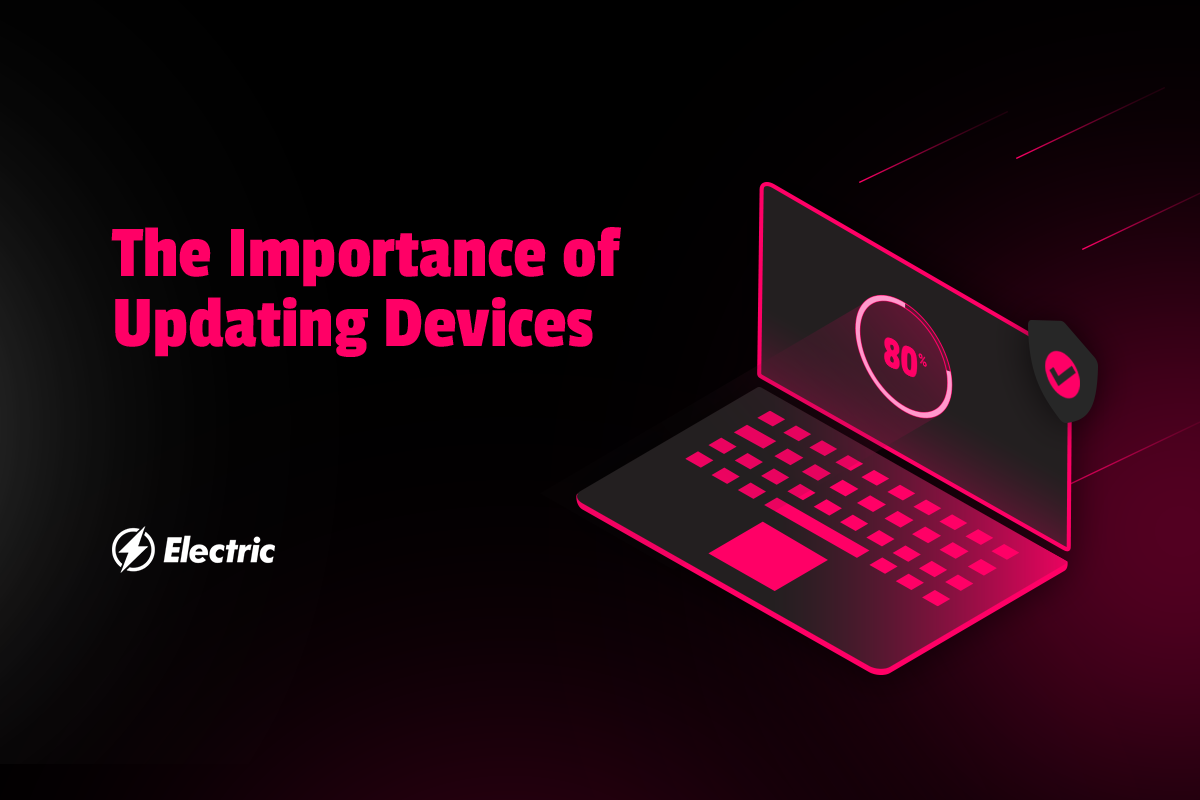
The shift to remote and hybrid work environments is here to stay, and with it comes an increased reliance on mobile devices and Bring Your Own Device (BYOD) policies. However, this produces a new set of challenges, especially for small and medium-sized businesses — how can you keep these devices updated with the latest software and security patches?
As part of a Mobile Device Management policy, you should ensure that all employee devices are up-to-date at all times. This significantly reduces cybersecurity threats, protects your valuable data, and guarantees your business is compliant. Besides, regular company-wide rollouts of updates keep all of your devices standardized and consistent throughout the organization, significantly reducing any problems that may impact employee productivity later on.
Why are Device Updates Important?
Despite the fact that mobile device updates get released as soon as vulnerabilities within the current software are discovered, you can’t always rely on your employees to ensure their device is running the latest software. A single employee with outdated software can spell disaster for the whole organization’s data and security. Below are four key reasons that device updates are a lifesaver for your business.
1. Security
The most critical reason software vendors release updates is to seal discovered security loopholes within the system. The tricky part is that these entry points become publicly known to everyone as soon as the new software patches are out. Therefore, cyber criminals usually get straight to work preying on those who don’t patch on time.
2. Improved features
Technology keeps evolving to more advanced levels. Therefore, software updates have the capability to increase efficiency by boosting user experience, improving speed, and automating previously manual tasks. Keeping every device in sync with these new features enhances productivity across the organization.
3. Collaboration and compatibility
Remote and hybrid workplaces are powered by the ability of employees to collaborate seamlessly, no matter the location or the device. Running the same software version on all devices ensures the same experience for everyone, while eliminating the risk of incompatibility between the old and new versions. Besides, it improves the employee experience when workers can effortlessly shift from one device to another and continue impeccably from where they left off.
4. Saves time and money
As a small-medium business, your number one goal is to reduce expenses as much as possible. However, most managers get it wrong when they think it saves money by not updating their IT infrastructure. Think of it from this standpoint: the potential cost of wasted time and revenue during a disruption due to unstable mobile systems can easily surpass that of updating early.
What Happens When Devices are Missing Important Updates?
What is the worst thing that can potentially happen to a business if devices are missing important updates? Indeed, a lot can go wrong. Due to negligence, some small businesses have closed their doors, never to return. Therefore, it’s important not to overlook the risks your business exposes itself to by allowing employees to continue using obsolete technology.
1. Data security and vulnerability
When you look at cybersecurity statistics in the U.S. and globally, you have a reason to think again about the security posture of your business. More criminals are entering the scene, making even small businesses their top prey. Ransomware attacks, DDoS, data breaches/theft, and malware infection can tear down your reputation. Unfortunately, this is the most considerable risk you put yourself at by continuing to use devices that are missing important updates. A good example is the Equifax data breach which happened because hackers leveraged a known vulnerability, for which a software patch already existed.
2. Disruption
Today’s society doesn’t understand the language of ‘unavailable’. As soon as your business experiences downtime or disruption, customers are ready to move to your competition. A study found that more than 10% of small businesses stand to lose upwards of $50,000 per hour if they experience a disruption. Bugs in the software often cause downtime. Obviously, these bugs are fixed during new update releases. Therefore, failing to patch your software can cause a system crash that can possibly take hours or days to resolve.
3. Poor productivity
Important updates make software more effective while improving its speed and automating some tasks. Continuing to use the obsolete version means that employees will have to do more and wait more time for the system to process jobs. This doesn’t only impact their productivity, but also reduces the number of clients that can be served.
4. Compliance risks
As governments and various regulatory bodies tighten requirements for cybersecurity compliance, it’s crucial to keep your company compliant to avoid fines, penalties, or even possible lawsuits. Besides, some contracts such as those of DoD require strict compliance, like CMMC compliance, NIST SP 800-171 accreditations, etc., to award contracts. Don’t let updates get you on the wrong side of the law or perhaps cost you a client.
5. Costs
As a rule of thumb, the longer you wait to apply updates, the more costly it gets. After all, you don’t want to wait for every division of your IT to get outdated so that you can do it all at once. This can easily overwhelm your resources and double or even triple the initial cost compared to proactive updates. In addition, you can also lose money in the form of lost productivity, downtime, ransoms paid to criminals, and data loss.
How to Update Your Devices Efficiently
Considering the dynamic of today’s workforce and the different types of mobile devices each person prefers, things can get complex when you try to manage mobile device updates in-house. Leaving the responsibility to individual employees who may not understand how to update their devices is not a good idea either.
The other option you have is building a full-fledged on-site IT team that can track and make sure every device is up-to-date through mobile device management tools. However, this is often not possible for most small to medium enterprises, considering the cost.
Outsourcing device updates to a company like Electric simplifies this process. With outsourced Mobile Device Management software, you get all the benefits of remote, company-wide updates at a fraction of the cost of DIY. New remote employees also won’t have to wait weeks to fully set up their devices. With remote MDM, we automate device provisioning for new hires and de-provisioning for those leaving to protect your data. Contact us today to learn more.



